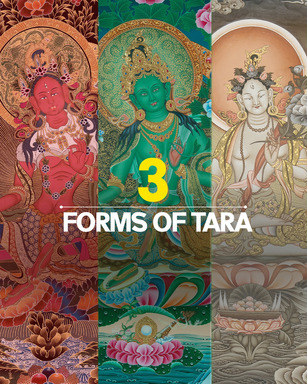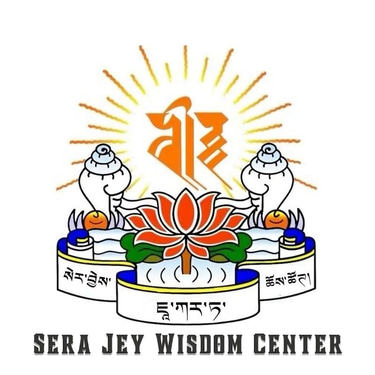The Three Forms of Tara: Green, White, and Red Manifestations of the Divine Feminine in Buddhism
Together, they represent enlightened action, compassion, and wisdom guiding us through life’s challenges with grace and fierce protection.
8/3/20252 min read
Tara is one of the most beloved deities in Tibetan Buddhism, revered as the embodiment of compassion in action and the enlightened feminine energy. Her name means “Star” or “She Who Liberates,” reflecting her role as a swift savior who comes to the aid of those in need. Tara manifests in many forms, each representing different aspects of her wisdom and compassionate activity. Among the most widely honored are the Three Principal Forms of Tara: Green Tara, White Tara, and Red Tara. Though all are expressions of the same enlightened essence, each radiates a unique energy and offers distinct blessings to practitioners.
Green Tara is the most popular and active form, often referred to as the “Mother of All Buddhas.” She is depicted seated with one leg extended, ready to spring into action. Her green color symbolizes vitality, growth, and protection. Green Tara is invoked for her quick response to help those in danger, fear, or mental distress. She embodies compassionate action and removes obstacles on the path—whether physical, emotional, or spiritual. Practitioners often recite her mantra, Om Tare Tuttare Ture Soha, to invoke her swift aid and guidance. Green Tara is also known for helping with fears such as pride, ignorance, jealousy, and attachment, transforming these into wisdom and liberation.
White Tara represents purity, longevity, and healing. Her serene and peaceful form radiates a pure white light, symbolic of the ultimate truth and the clarity of the mind. She is usually shown with seven eyes—on her palms, soles, and forehead—indicating her all-seeing awareness and ability to watch over all sentient beings. White Tara is associated with maternal compassion and is especially invoked for long life, protection from illnesses, and spiritual strength. Her energy is gentle and nurturing, bringing peace to troubled minds and promoting well-being on all levels. She is also connected with practices that remove karmic obstacles and promote inner purification.
Red Tara is less commonly known but equally powerful. She embodies the fierce and passionate aspect of enlightened compassion. Red Tara’s vibrant red color represents magnetizing energy, the power of love, and the ability to attract positive conditions. She is often called upon for subduing harmful forces, increasing personal power, and manifesting compassionate activity in relationships and worldly affairs. Her practice is sometimes used to develop charisma, improve communication, and deepen one’s ability to connect meaningfully with others. Red Tara’s energy is transformational—she helps practitioners harness desire and emotion as a vehicle for awakening rather than repression.
Together, the three forms of Tara offer a complete spectrum of enlightened qualities. Green Tara protects and acts swiftly, White Tara heals and nurtures, and Red Tara transforms and magnetizes. They are not separate deities but reflections of Tara’s boundless ability to respond to the needs of beings in different circumstances. Each manifestation offers a different entry point into the vast heart of awakened wisdom, reminding practitioners that compassion can take many forms—peaceful, active, or fierce—and that liberation is available to all who call upon her with sincerity.
In honoring the three Taras, devotees are not only invoking divine support but also cultivating those same enlightened qualities within themselves. Tara is both a protector and a mirror, showing the potential that lies within every human heart to awaken, act wisely, and serve with love.


Community
Explore teachings, prayers, and cultural events.
Address
Sera Jey Wisdom Center
Ruko Savoy Blok C1 No.31 & 32,
River Garden Jakarta Garden City,
Cakung Timur, Jakarta Timur 13910,
Indonesia
+62 813 2488 4241
© 2025. All rights reserved.
